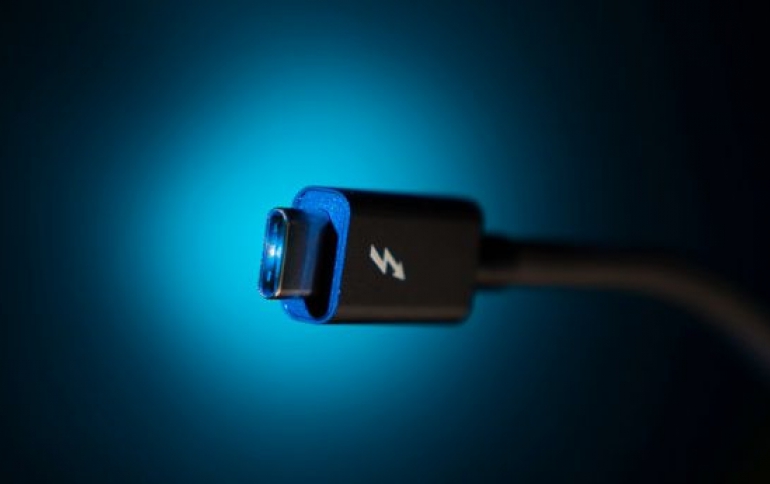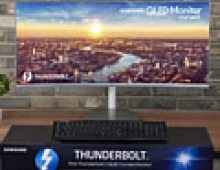
Thunderbolt-based USB4 Specification Coming This Year
The USB Promoter Group today announced the pending release of the USB4 specification, which defines the next generation USB protocol architecture doubling the bandwidth to extend USB Type-C performance.
The next generation USB architecture compliments and builds on the existing USB 3.2 and USB 2.0 architectures. It is based on the Thunderbolt protocol specification recently contributed by Intel. It doubles the bandwidth of USB and enables multiple simultaneous data and display protocols.
The new USB4 architecture defines a method to share a single high-speed link with multiple end device types dynamically that best serves the transfer of data by type and application. As the USB Type-C connector has evolved into the role as the external display port of many host products, the USB4 specification provides the host the ability to optimally scale allocations for display data flow. Even as the USB4 specification introduces a new underlying protocol, compatibility with existing USB 3.2, USB 2.0 and Thunderbolt 3 hosts and devices is supported. As with previous USB specifications, USB4 isn’t specific to a certain port type, though these kinds of speeds will only be achievable in USB-C cables.
“The primary goal of USB is to deliver the best user experience combining data, display and power delivery over a user-friendly and robust cable and connector solution,” said Brad Saunders, USB Promoter Group Chairman. “The USB4 solution specifically tailors bus operation to further enhance this experience by optimizing the blend of data and display over a single connection and enabling the further doubling of performance.”
Key characteristics of the USB4 solution include:
- Two-lane operation using existing USB Type-C cables and up to 40 Gbps operation over 40 Gbps-certified cables
- Multiple data and display protocols to efficiently share the total available bandwidth over the bus
- Backward compatibility with USB 3.2, USB 2.0 and Thunderbolt 3


“Releasing the Thunderbolt protocol specification is a significant milestone for making today’s simplest and most versatile port available to everyone,” said Jason Ziller, General Manager, Client Connectivity Division at Intel. “By collaborating with the USB Promoter Group, we’re opening the doors for innovation across a wide range of devices and consumer experiences to maximize adoption of Thunderbolt compatible products.”
Intel says that it wants Thunderbolt in more and more devices in the future. Between its contribution to USB4 and the implementation in future Ice Lake processors announced at CES 2019, it looks like that’s coming true.
The USB4 specification is on track to be published around the middle of 2019. Coincident with the release of the USB4 specification, the release of an updated USB Type-C Specification will be made to comprehend USB4 bus discovery, configuration and performance requirements.
USB Developer Days 2019, in the second half of this year, will include detailed technical training covering the USB4 specification and the latest for USB Type-C, USB Power Delivery, and other exciting topics.





















